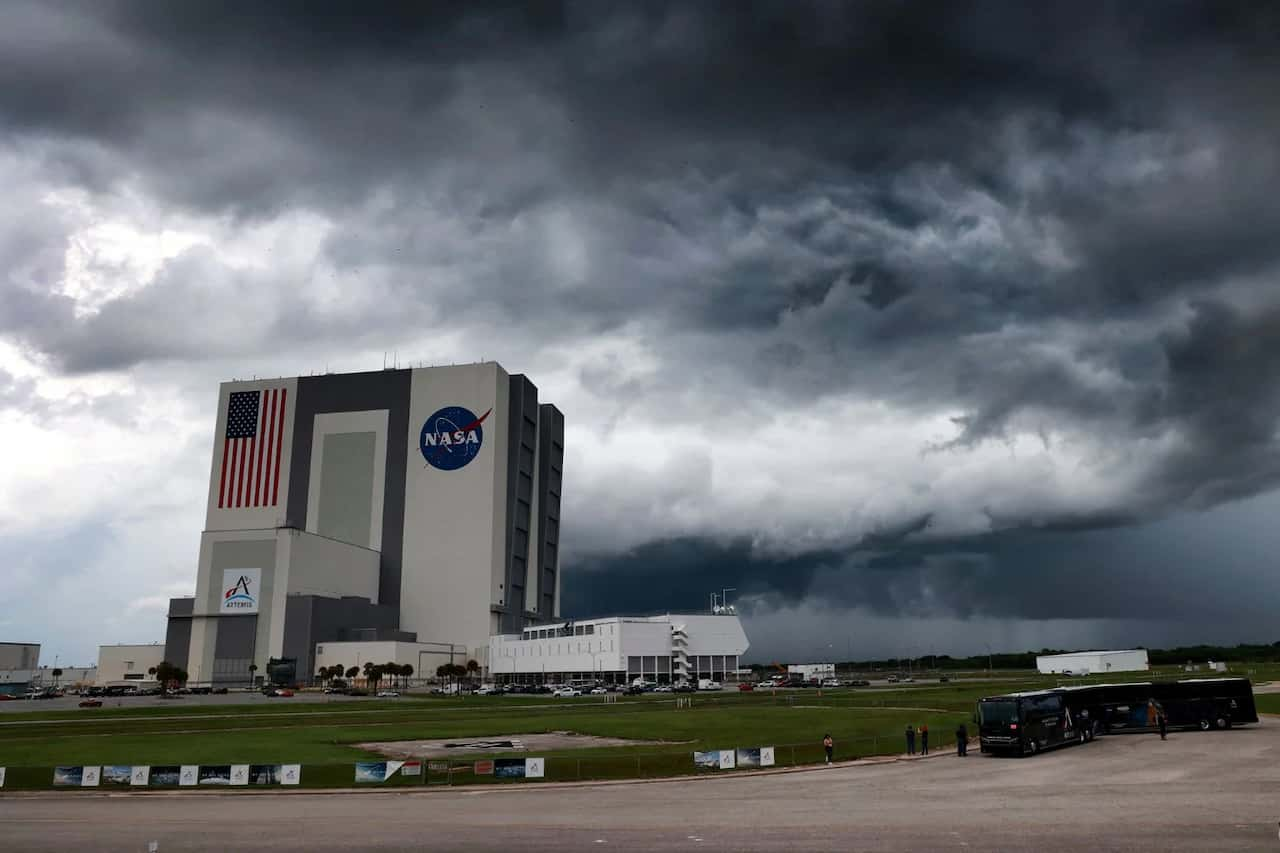Storm Clouds Gather: Hurricane Milton Forces NASA to Postpone Jupiter Moon Mission
As a news reporter in Cape Canaveral, Florida, I can tell you that the atmosphere here is tense. The much-anticipated launch of NASA’s Europa Clipper mission, set to explore one of Jupiter’s most intriguing moons, has been put on hold. The culprit? A massive Hurricane Milton storm is barreling toward the Florida coast at an alarming speed.
Just yesterday, Milton was a relatively mild Category 1 hurricane. But it has rapidly intensified into a Category 5 monster in a stunning turn of events. This puts Milton in the record books, with only Hurricanes Wilma (2005) and Felix (2007) outpacing its rapid growth.
The Europa Clipper spacecraft, a $5.2 billion investment in our quest to understand the potential for life beyond Earth, was all set for liftoff on Thursday. Now, it sits safely tucked away in a hangar at Kennedy Space Center, waiting out the storm alongside its launch vehicle, a SpaceX Falcon Heavy rocket.
Tim Dunn, NASA’s senior launch director, emphasized safety first. “We’re not taking any chances with our team or this crucial mission,” he stated. “Once the storm passes, we’ll assess any damage and determine our next move.”
This delay is just the latest hurdle for the Europa Clipper team. In July, engineers discovered a potential weakness in the spacecraft’s electronics. Some parts weren’t up to the challenge of Jupiter’s harsh radiation environment. This setback pushed the mission’s clearance for launch to September 10th, cutting it close to the original launch date.
But Mother Nature had other plans. Hurricane Milton formed quickly in the warm waters of the Gulf of Mexico. Its rapid intensification caught many by surprise, with wind speeds jumping from around 75 mph to over 157 mph in just seven hours.
The storm’s approach has thrown the Space Coast into preparation mode. Kennedy Space Center is now at HURCON III status, which means teams are working hard to secure everything that high winds could damage. This includes the Europa Clipper and its rocket and all the vital equipment needed for space launches.
It’s not just NASA feeling the impact. Nearby Tampa International Airport and St. Pete-Clearwater International Airport have announced closures starting tomorrow. The entire region is bracing for Milton’s arrival.
For the Europa Clipper team, this delay is frustrating but not catastrophic. The mission’s launch window remains open until November 6th, giving NASA some flexibility to wait out the storm and find a new launch date. However, each day of delay pushes back the spacecraft’s eventual arrival at Jupiter, currently slated for April 2030.
Once it does launch, the Europa Clipper has an epic journey ahead. It will travel 2.6 billion kilometers through space before reaching the Jupiter system. There, it will perform a complex dance around the gas giant, making 49 close flybys of Europa.
Why all this fuss over the moon? Europa is one of the most promising places in our solar system to look for life beyond Earth. Beneath its icy crust, scientists believe there’s a vast, salty ocean. The Europa Clipper will use advanced instruments to peer beneath the ice, map the moon’s surface, and analyze its thin atmosphere. This data will help us understand if Europa could support life as we know it.
The mission’s importance makes this weather delay all the more dramatic. Every scientist, engineer, and space enthusiast is now watching Hurricane Milton’s progress with bated breath. The storm’s path and intensity determine when the Europa Clipper can finally begin its journey.
As we wait, the Kennedy Space Center remains a hive of activity. Teams double-check every safeguard, ensuring that the spacecraft and the facilities can weather whatever Milton brings. The Europa Clipper, a marvel of engineering about the size of an SUV, rests securely in its protective cocoon.
This situation highlights the complex dance between human ambition and natural forces. Even as we reach for the stars, we remain at the mercy of Earth’s weather patterns. It’s a humbling reminder of the challenges involved in space exploration.
For now, all eyes are on the weather maps. Meteorologists work overtime, feeding data into complex models to predict Milton’s exact path and intensity. Their forecasts will be crucial in NASA’s decision-making process over the coming days.
As this reporter signs off, the skies over Cape Canaveral are darkening. The wind is picking up, carrying the salty tang of the nearby Atlantic. Hurricane Milton may delay our reach for the stars, but it can’t dim the excitement surrounding the Europa Clipper mission. When the skies clear, this incredible spacecraft will be ready to embark on its historic journey to unravel the mysteries of Europa.
Stay tuned for updates as this story develops. The Europa Clipper may be grounded for now, but our quest to understand our cosmic neighborhood continues, come rain or shine.
